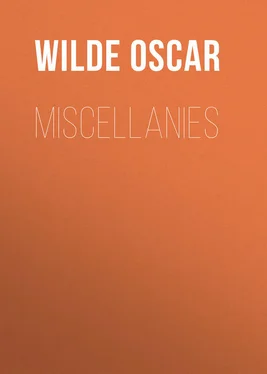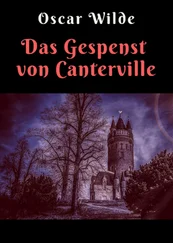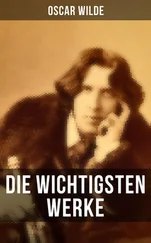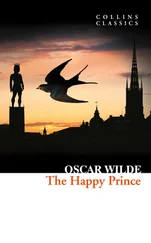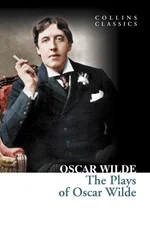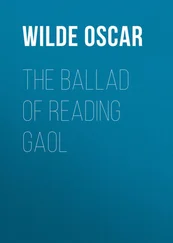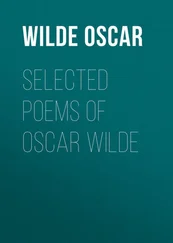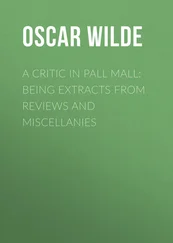Oscar Wilde - Miscellanies
Здесь есть возможность читать онлайн «Oscar Wilde - Miscellanies» — ознакомительный отрывок электронной книги совершенно бесплатно, а после прочтения отрывка купить полную версию. В некоторых случаях можно слушать аудио, скачать через торрент в формате fb2 и присутствует краткое содержание. Жанр: literature_19, foreign_prose, на английском языке. Описание произведения, (предисловие) а так же отзывы посетителей доступны на портале библиотеки ЛибКат.
- Название:Miscellanies
- Автор:
- Жанр:
- Год:неизвестен
- ISBN:нет данных
- Рейтинг книги:5 / 5. Голосов: 1
-
Избранное:Добавить в избранное
- Отзывы:
-
Ваша оценка:
- 100
- 1
- 2
- 3
- 4
- 5
Miscellanies: краткое содержание, описание и аннотация
Предлагаем к чтению аннотацию, описание, краткое содержание или предисловие (зависит от того, что написал сам автор книги «Miscellanies»). Если вы не нашли необходимую информацию о книге — напишите в комментариях, мы постараемся отыскать её.
Miscellanies — читать онлайн ознакомительный отрывок
Ниже представлен текст книги, разбитый по страницам. Система сохранения места последней прочитанной страницы, позволяет с удобством читать онлайн бесплатно книгу «Miscellanies», без необходимости каждый раз заново искать на чём Вы остановились. Поставьте закладку, и сможете в любой момент перейти на страницу, на которой закончили чтение.
Интервал:
Закладка:
The two largest contributors to this gallery are Mr. Ferdinand Heilbuth and Mr. James Tissot. The first of these two artists sends some delightful pictures from Rome, two of which are particularly pleasing. One is of an old Cardinal in the Imperial scarlet of the Cæsars meeting a body of young Italian boys in purple soutanes, students evidently in some religious college, near the Church of St. John Lateran. One of the boys is being presented to the Cardinal, and looks very nervous under the operation; the rest gaze in wonder at the old man in his beautiful dress. The other picture is a view in the gardens of the Villa Borghese; a Cardinal has sat down on a marble seat in the shade of the trees, and is suspending his meditation for a moment to smile at a pretty child to whom a French bonne is pointing out the gorgeously dressed old gentleman; a flunkey in attendance on the Cardinal looks superciliously on.
Nearly all of Mr. Tissot’s pictures are deficient in feeling and depth; his young ladies are too fashionably over-dressed to interest the artistic eye, and he has a hard unscrupulousness in painting uninteresting objects in an uninteresting way. There is some good colour and drawing, however, in his painting of a withered chestnut tree, with the autumn sun glowing through the yellow leaves, in a picnic scene, No. 23; the remainder of the picture being something in the photographic style of Frith.
What a gap in art there is between such a picture as the Banquet of the Civic Guard in Holland, with its beautiful grouping of noble-looking men, its exquisite Venetian glass aglow with light and wine, and Mr. Tissot’s over-dressed, common-looking people, and ugly, painfully accurate representation of modern soda-water bottles!
Mr. Tissot’s Widower , however, shines in qualities which his other pictures lack; it is full of depth and suggestiveness; the grasses and wild, luxuriant growth of the foreground are a revel of natural life.
We must notice besides in this gallery Mr. Watts’s two powerful portraits of Mr. Burne-Jones and Lady Lindsay.
To get to the Water-Colour Room we pass through a small sculpture gallery, which contains some busts of interest, and a pretty terra-cotta figure of a young sailor, by Count Gleichen, entitled Cheeky , but it is not remarkable in any way, and contrasts very unfavourably with the Exhibition of Sculpture at the Royal Academy, in which are three really fine works of art – Mr. Leighton’s Man Struggling with a Snake , which may be thought worthy of being looked on side by side with the Laocoon of the Vatican, and Lord Ronald Gower’s two statues, one of a dying French Guardsman at the Battle of Waterloo, the other of Marie Antoinette being led to execution with bound hands, Queenlike and noble to the last.
The collection of water-colours is mediocre; there is a good effect of Mr. Poynter’s, the east wind seen from a high cliff sweeping down on the sea like the black wings of some god; and some charming pictures of Fairy Land by Mr. Richard Doyle, which would make good illustrations for one of Mr. Allingham’s Fairy-Poems, but the tout-ensemble is poor.
Taking a general view of the works exhibited here, we see that this dull land of England, with its short summer, its dreary rains and fogs, its mining districts and factories, and vile deification of machinery, has yet produced very great masters of art, men with a subtle sense and love of what is beautiful, original, and noble in imagination.
Nor are the art-treasures of this country at all exhausted by this Exhibition; there are very many great pictures by living artists hidden away in different places, which those of us who are yet boys have never seen, and which our elders must wish to see again.
Holman Hunt has done better work than the Afterglow in Egypt ; neither Millais, Leighton, nor Poynter has sent any of the pictures on which his fame rests; neither Burne-Jones nor Watts shows us here all the glories of his art; and the name of that strange genius who wrote the Vision of Love revealed in Sleep , and the names of Dante Rossetti and of the Marchioness of Waterford, cannot be found in the catalogue. And so it is to be hoped that this is not the only exhibition of paintings that we shall see in the Grosvenor Gallery; and Sir Coutts Lindsay, in showing us great works of art, will be most materially aiding that revival of culture and love of beauty which in great part owes its birth to Mr. Ruskin, and which Mr. Swinburne, and Mr. Pater, and Mr. Symonds, and Mr. Morris, and many others, are fostering and keeping alive, each in his own peculiar fashion.
THE GROSVENOR GALLERY 1879
( Saunders’ Irish Daily News , May 5, 1879.)
While the yearly exhibition of the Royal Academy may be said to present us with the general characteristics of ordinary English art at its most commonplace level, it is at the Grosvenor Gallery that we are enabled to see the highest development of the modern artistic spirit as well as what one might call its specially accentuated tendencies.
Foremost among the great works now exhibited at this gallery are Mr. Burne-Jones’s Annunciation and his four pictures illustrating the Greek legend of Pygmalion – works of the very highest importance in our æsthetic development as illustrative of some of the more exquisite qualities of modern culture. In the first the Virgin Mary, a passionless, pale woman, with that mysterious sorrow whose meaning she was so soon to learn mirrored in her wan face, is standing, in grey drapery, by a marble fountain, in what seems the open courtyard of an empty and silent house, while through the branches of a tall olive tree, unseen by the Virgin’s tear-dimmed eyes, is descending the angel Gabriel with his joyful and terrible message, not painted as Angelico loved to do, in the varied splendour of peacock-like wings and garments of gold and crimson, but somewhat sombre in colour, set with all the fine grace of nobly-fashioned drapery and exquisitely ordered design. In presence of what may be called the mediæval spirit may be discerned both the idea and the technique of the work, and even still more so in the four pictures of the story of Pygmalion, where the sculptor is represented in dress and in looks rather as a Christian St. Francis , than as a pure Greek artist in the first morning tide of art, creating his own ideal, and worshipping it. For delicacy and melody of colour these pictures are beyond praise, nor can anything exceed the idyllic loveliness of Aphrodite waking the statue into sensuous life: the world above her head like a brittle globe of glass, her feet resting on a drift of the blue sky, and a choir of doves fluttering around her like a fall of white snow. Following in the same school of ideal and imaginative painting is Miss Evelyn Pickering, whose picture of St. Catherine, in the Dudley of some years ago, attracted such great attention. To the present gallery she has contributed a large picture of Night and Sleep , twin brothers floating over the world in indissoluble embrace, the one spreading the cloak of darkness, while from the other’s listless hands the Leathean poppies fall in a scarlet shower. Mr. Strudwich sends a picture of Isabella , which realises in some measure the pathos of Keats’s poem, and another of the lover in the lily garden from the Song of Solomon, both works full of delicacy of design and refinement of detail, yet essentially weak in colour, and in comparison with the splendid Giorgione-like work of Mr. Fairfax Murray, are more like the coloured drawings of the modern German school than what we properly call a painting. The last-named artist, while essentially weak in draughtsmanship, yet possesses the higher quality of noble colour in the fullest degree.
Читать дальшеИнтервал:
Закладка:
Похожие книги на «Miscellanies»
Представляем Вашему вниманию похожие книги на «Miscellanies» списком для выбора. Мы отобрали схожую по названию и смыслу литературу в надежде предоставить читателям больше вариантов отыскать новые, интересные, ещё непрочитанные произведения.
Обсуждение, отзывы о книге «Miscellanies» и просто собственные мнения читателей. Оставьте ваши комментарии, напишите, что Вы думаете о произведении, его смысле или главных героях. Укажите что конкретно понравилось, а что нет, и почему Вы так считаете.
